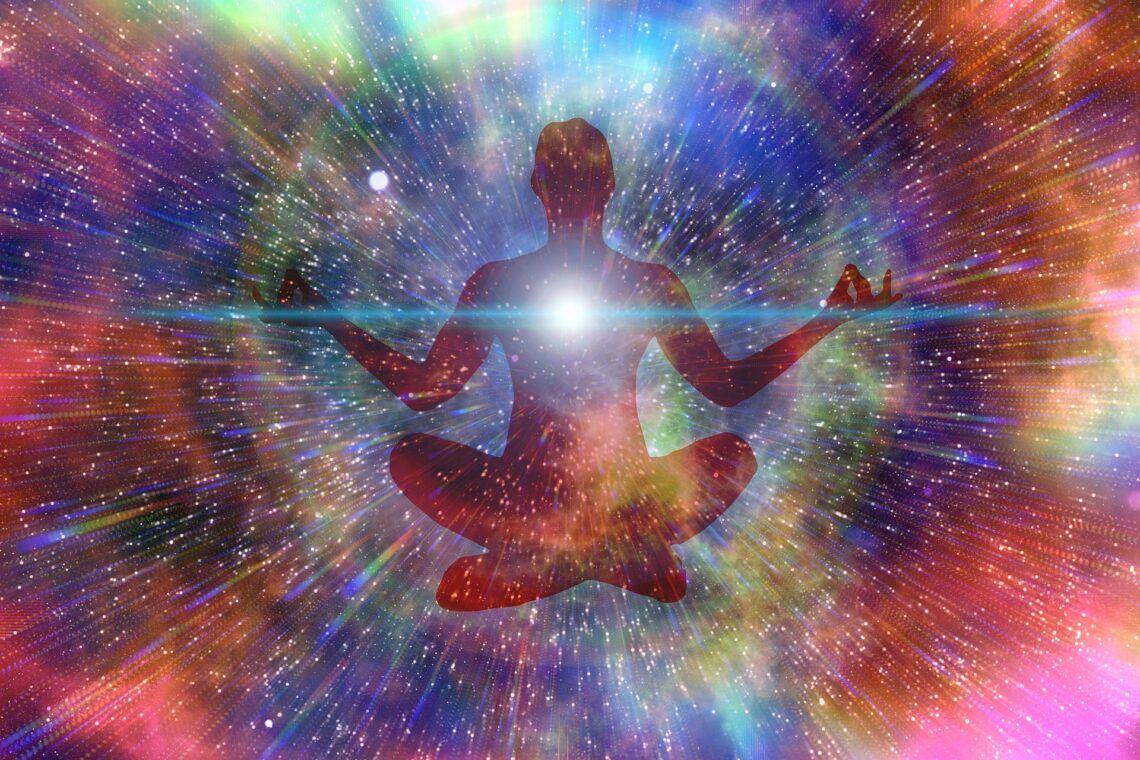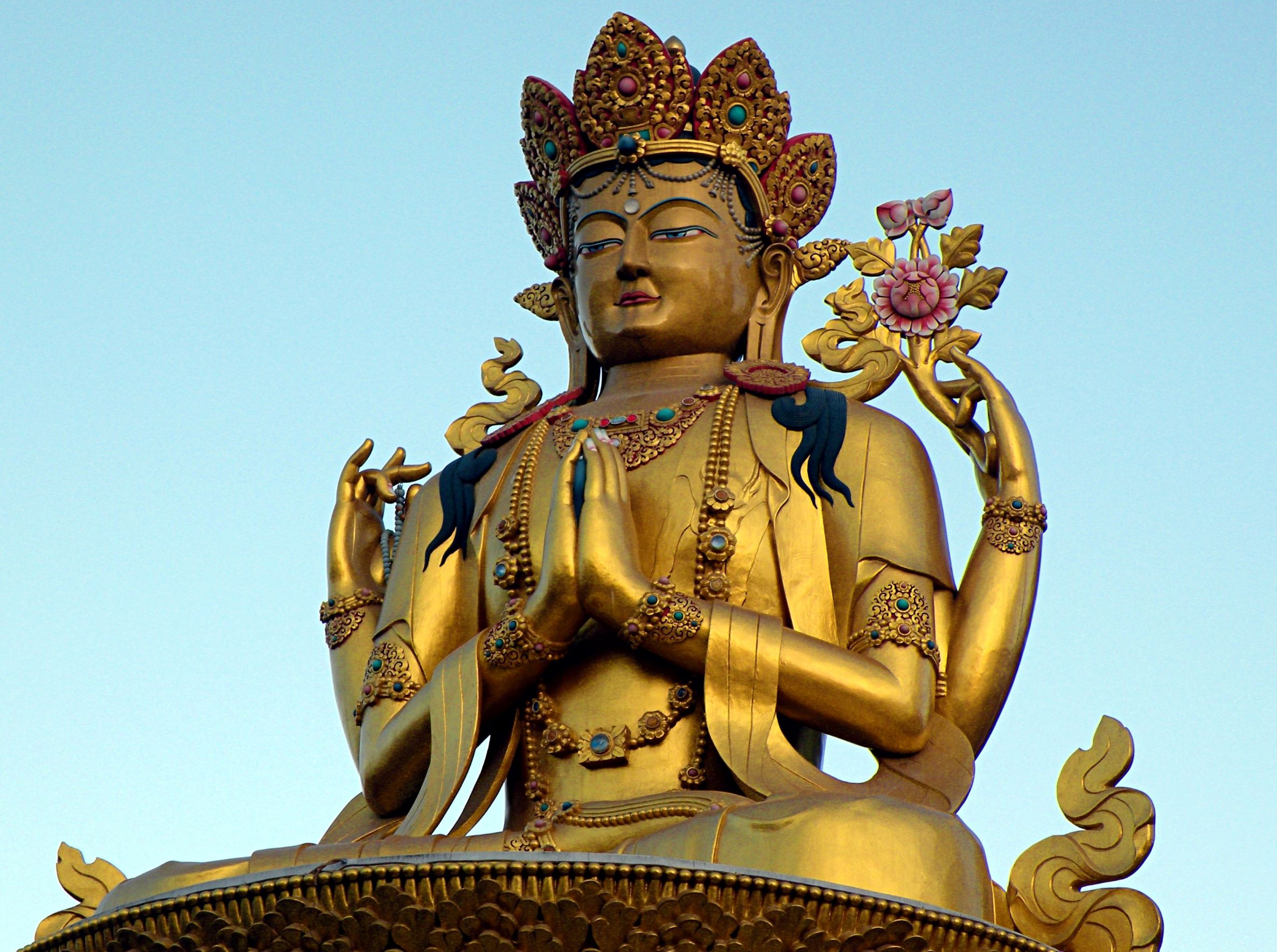
The Bardo of Meditation
The Bardo of Meditation is where we focus most directly on realizing the nature of mind. It is here that we develop the practices to confront the nature of our mind and learn to tame it. It is here that we train and make our preparation for death. If we do our due diligence here, we can create a very nice death indeed, however, if not, then we could be in for a very rough ride.
As we said in earlier articles, a bardo is an interval or gap between two moments. The Bardo of Meditation is the gap where we dwell in the nature of mind between the leaving and returning of our ordinary confused states of mind.
The Bardo of Meditation is the last of the three bardos of life. In previous articles I covered Bardos in General here , and the first and second of the three Bardos of Life: the Bardo of this Life here and the Bardo of Dream here The last bardo of life, which I will cover in this article, is the Bardo of Meditation.
Non-Conceptual Awareness
In the Bardo of Meditation, when we emerge from that deep absorption in Samadhi or non-conceptual awareness, we have two choices. We can use that state of deep absorption to further our journey into the experience of mind, or we can return to our ordinary disturbed and confused mind. One path points the way to ultimate freedom, and the other to our continued enslavement in the world of illusion.
The author of the book, Mind Beyond Death, Dzogchen Ponlop Rinpoche says,
“The simple difference lies in our habituation either to states of awareness or ignorance. It is a difference that marks our experience in this life as well as our experience of death. When we die, our habitual mind continues. We may be beset with fear and overwhelmed by the reflections of our own mind that appear to us, reflections from which we cannot escape. There is nowhere to hide from our mind. If we have glimpsed the nature and trained ourselves to rest in its nature, then we will recognize those appearances as the self-display of mind. (Italics Mine) They will help us to further recognize and realize mind’s nature. We will have the opportunity to attain complete liberation.”
Vipashyana
To get a sense of the nature of mind, imagine you have had a strenuous day. Maybe it was a hard day at work, or perhaps you had just completed some physically exhausting task and now you are completely spent. When you get home you just want to sit down and relax. You don’t want to think about or deal with anything. You just want to be left alone to relax in the moment, allowing your mind to rest in peace. You have a sense of being fully present and appreciating the moment.
This is an analogous to the experience of vipashyana which means “clear seeing” or “superior insight”. What is being seen at this point is the nature of mind. This is sometimes called the “insight into emptiness”.
Rinpoche makes this point about vipashyana,
“The key point in vipashyana is, therefore, awareness. What is awareness? It is simply a state of mind that is not distracted from the present moment. When we bring the mind to rest in its own state, in its own nature, without distraction, then we are in a state of awareness of the present moment.”
Vipashyana begins with the practice of meditation on emptiness; the object of focus is not a mantra, our breath, or even our navel, but is focused on the nature of mind itself and its emptiness.
Rinpoche makes this point on the role of the Bardo of Meditation,
“It is in the Bardo of Meditation where we train our minds to deal with the challenges and opportunities of the transitional experiences of all six bardo states. We are not simply trying to have a good meditation session or to become a calm person. We are not only working to improve our condition or psychological state in the bardo of this life. The benefit of the training goes far beyond that. If you view your training here as the means to acquire the tools and precious possessions you will carry with you wherever you go—even in your journey beyond this life—then you are hearing the message of Padmasambhava [Enlightened Buddhist Master] and his lineage.”
Taming the Wild Mind
The purpose of vipashyana is to tame our wild mind. Rinpoche uses the analogy of training a wild horse. The last thing we want to do is go up to a wild horse, grab it and try to force it to our will. That would end in disaster.
Rather, Rinpoche says, the trainer will first observe the actions of the wild horse from a distance over time. He will get to know its nature and its tendencies. He will even come to appreciate the beauty of the horse’s wild and free nature. He will develop a deep love and affection for the horse
When the trainer finally decides it is time to approach the horse we will do so, slowly and with great attentiveness to the horse’s reactions. Gradually, he will develop a personal connection to the horse and allow time for the horse to become familiar with him also. The horse will then realize he is not a threat to its well-being. A trust will be developed and a bond created.
When the time is right the trainer will mount the horse, always being very attentive to the horse’s actions and reactions. He must maintain this vigilant attentiveness over the next days, months and even years as he works with the horse. The trainer can never be complacent. He never knows what the horse might do next.
Taming our minds is similar to this. Rinpoche explains the connection.
“First we must make a personal connection to our wild minds and learn to appreciate its untamed, natural beauty. Then we have to capture it with mindfulness, and finally we have to tame and train the mind with further skillful means.
Further on, he says,
“Once we have reached that level of training, then even in the bardos of death we will be able to guide our minds steadily past all difficulties toward awakening, toward freedom from samsara.”
Stages of Training in Selflessness
If we doubt the concept that we don’t have a self, we may want to begin our meditations by actually looking for our self to see if one that can be found. We might look for it in the body and the mind. We could start with the body. We could look for it in our heart, our brain, even our whole body, but no self will be found. We could look for it in our mind, but won’t find it there either. There is nothing we can find anywhere that would allow us to say, “yes, that’s me. That’s who I am”.
We realize then, that there is only emptiness. Everything reduces down to emptiness, its true nature. So we conclude, emptiness is all there is.
By emptiness, we don’t mean nihilism, the belief that life has no overriding meaning or purpose. Rinpoche explains the distinction between nihilism and emptiness.
“A true understanding of emptiness—one which does not distort its meaning into nihilism, the extreme and total negation of relative appearances—comes from understanding the Mahayana Madhymaka view of the great master Nagarjuna. When the full teachings of such a master are comprehended, we appreciate emptiness as a unified state of being that surpasses and is devoid of the dualistic split of self and other.”
This state is called by various names like “ultimate truth,” “Buddha nature,” or “genuine reality”.
Rinpoche says,
“They all refer to the truest, deepest and most genuine level of reality. It is a state of wisdom that is inconceivable, beyond the reach of concept; therefore, when conceptual mind looks at it, nothing is ultimately found.”
Looking Directly at Mind
Rinpoche says it is not enough to just notice our thoughts and emotions, but rather we have to recognize their true nature and rest within that experience. We can do that in vipashyana meditation. In this meditation we allow ourselves to experience all of our thoughts and emotions, understanding that, over time, they will gradually dissipate.
If the thoughts and emotions are particularly strong, it may require more sessions of vipashyana meditation to slowly chip away at them. But if we are steadfast and diligent, eventually they will dissolve. We may even feel the need to talk to someone about them as a way to help our healing process.
Rinpoche says,
“The true nature of mind you are looking for is found simply in whatever you experience “now,” in this very moment. There is no “true nature” beyond that. This is what the guru points out. Our usual problem is when an afflicted mind arises, we do not recognize its ultimate nature, its fundamental state of emptiness. We do not see its vividly arising energy as the display of our own primordially pure awareness—our innate wakefulness. We think that it is purely a poison, a klesha.”
In vipashyana meditation we look directly at all the thoughts and feelings that arise without labeling them. We don’t say, this feeling is anger, or jealousy, or even happiness; we just experience the feeling as it is without the label. We ask ourselves, how it feels and tastes? We need to be present with these emotions completely, and not run away from them because we can’t accept that we could be angry or jealous.
So drop the labels and just experience the emotion itself. If thoughts do come to justify the emotion, ignore them. Understand they are distorting your experience and preventing you from working through it.
To cultivate this deeper awareness of the nature of mind, we need the courage to look directly at the present moment, whether it is positive or negative. It also helps to do this with a sense of humor because it relaxes us and gives us the inner space to deal with our emotions in a calmer and more relaxed manner.
Rinpoche says,
“When we can relax in that experience of nowness—whatever that is—there is hope. It may be just a glimpse of that experience, but if we can sustain that glimpse, then it becomes realization. We will discover how insubstantial and ephemeral the appearances of mind are—how our thoughts and emotions are simply beautiful experiences. There is nothing to frighten or threaten us. However, if we go beyond the actual experience and label our emotions, the we will lose our opportunity.”
After giving an example of labeling, he continues a little later,
“If, on the other hand, we allow ourselves to simply rest relaxed for a moment, then that moment becomes an experience of freedom.”
To learn more about the magic of the universe: Click this link: The Magical Universe.
Image by Gerd Altmann from Pixabay




